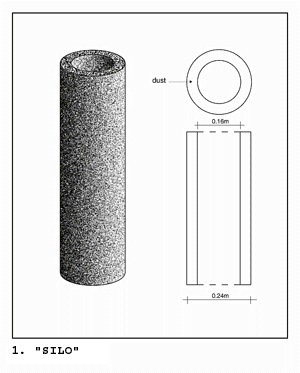On Numinosity
“Though men associate with it most closely yet they are separated from it, and those things which they encounter daily seem to them strange.”
–Heraclitus, Fragment 72
From 1929 to 1962, the French phenomenologist, Gaston Bachelard wrote several books in which he analysed and elucidated the “poetics” of matter, revealing the subtle yet profound ways the properties and associations of various substances affect the imagination. He demonstrated scientifically that water, for instance, could be experienced as “dissolved girl.” He psychoanalysed fire and spoke knowledgeably of the “hidden spirit” imprisoned in the solids, liquids and gasses we usually take for granted. “Dreaming of the secret power of substances, we dream of our secret being. The greatest secrets of our being are hidden from ourselves.”
For some time, we at Amateur have been exploring a small branch of the tree he planted. A numinous object is one in which matter, form and situation combine to ‘haunt’ or otherwise fascinate the imagination. The objects we attempt to understand and hope to create are sometimes physically tangible, actual things. But literary objects are also an important part of our research.
[see TEST CASE – THE NUMINOSITY OF LITERARY OBJECTS]
“I have always been haunted by objects that possess their own light: things and situations that cast peripheral illumination on known ideas, causing them to be viewed in a different configuration.”
Brian Catling, sculptor/poet/performer
An early experiment:
Fifteen objects were created by choosing from a menu of thousands of possible forms and materials. The aim was to create things which would generate a numinous charge in any situation (though, obviously, the charge would be different on, say, a ship at sea or in, say, a mushroom-cellar). Using an instrument of our own invention—the numenometer*—we took calibrated readings. For “a yolk of leather in a tobacco egg”, for instance, a reading of 63.7 nmns was recorded. While an “arrow of ice wrapped in surgical gauze” generated no more than 37 nmns. The figure in nmns is the average of many hundreds of individual readings made over several years, in some cases over several decades.
That some of these objects bore more than a passing resemblance to the art of the day was noted. As an experiment, wondering if we weren’t artists ourselves, we assigned titles at random to our models. This completely altered the readings we got. The cylinder of dust which had generated a modest 22.6 nmns when untitled, was now identified as “Silo”

and registered an impressive 81.8 on the numenometer. Calling the yolk of leather in a tobacco egg, “October Seventh”, on the other hand, diminished its charge from 27.4 nmns to a mere 7 nmns. Identification and analysis of the factors involved in such shifts will continue to absorb us for some time, (i.e. progress in this field is slow).
More rapid has been our progress in techniques of Object Generation. Once a tedious process involving pages of documentation and cumbersome equipment, matter and form can now be combined automatically on a computer screen thanks to the development of object generating engines.
[see FROM THE CONFIGURABLE CATALOGUE OF OBJECTS]
* Recipe for a numenometer (aka a ‘god detector’): You cross a Geiger counter / with a divining rod, / and in case of trouble add / a touch of cattle prod.
PB










